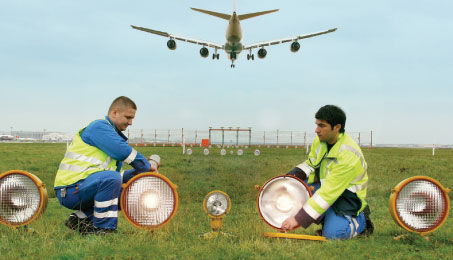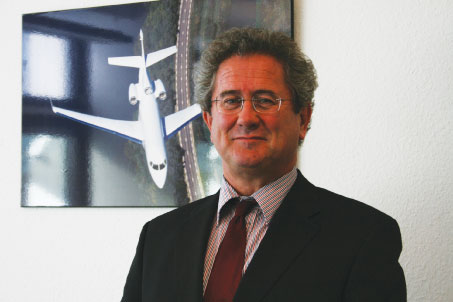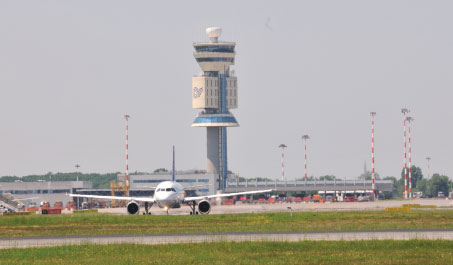The responsibilities of the European Aviation Safety Agency (EASA) have been extended to the areas of Air Traffic Management, Air Navigation Systems and aerodromes. In the last two editions of ‘Airport Business’, the aerodrome section of the Rulemaking Directorate of EASA was introduced as well as the challenging task of developing the new framework for aerodrome safety.

Overview of the steps of the Rule development.
Following this, the implementing rules, which are necessary for the new system to become operative, now have to be developed. Up to now safety regulation of aerodromes had been a matter of each individual EASA Member State by itself but underpinned by the ICAO Standards and Recommended Practices for the area that are found in Annex 14 to the Chicago Convention. As there are no pre-existing EU-rules for the design, operational safety of aerodromes, the future common rules will of course be also based on that annex. The highly technical content of the Annex 14 represents an international commitment to which all EASA Member States have to adhere. However, these rules will be complemented in certain areas, for example in the field of aerodrome operations or the procedures for aerodrome certification. The result will be a harmonised but proportionate European-wide regulatory framework which is to be implemented and enforced by the authorities of all EASA Member States when the rules are in place.
In order to allow the readers of Airport Business to understand the way in which EASA prepares the aforementioned rules that will make up the future system, provided here is a brief overview over the rulemaking process and an introduction to the rulemaking tasks that will start this summer.

In order to establish the new regulatory system for aerodrome safety by the end of 2013, EASA has identified three initial tasks that need to be achieved: Requirements for aerodrome operator organisations and oversight authorities, requirements for aerodrome operations and requirements for aerodrome design.
The rulemaking process:
Terms of Reference for rulemaking tasks – definition:
The Agency’s rulemaking process begins with the initiation of the rulemaking tasks. Each task is specified in its Terms of Reference (ToR) and included in the Agency’s rulemaking programme. The ToR summarise the regulatory basis and necessary references (European Union law or material from the International Civil Aviation Organization (ICAO) for instance), the subject matter, justification and the objectives of a given task as well as any subordinate tasks underneath the main task and any relevant interface issues. Finally, the working method employed to achieve the task and the time scale and milestones in which the task will be performed are indicated. The draft ToRs are submitted to the Agency’s consultative bodies for consultation.
Rulemaking groups:
One of the standard working methods of the Agency involves the drafting of rules with support of a rulemaking group, composed of selected experts from the National Aviation Authorities and the industry. Group members are selected on the basis of their professional expertise. The work of the group to achieve the task shall remain inside the confines of the ToR and must not stray from its objectives. The Agency coordinates and facilitates the work of the rulemaking group and monitors its progress. The ToR can be amended in justified cases through the aforementioned consultation process.
The Rule development:
The future common aerodrome safety rules will be developed in accordance with the established EASA rulemaking procedure. The chart opposite describes the steps of this procedure. At its heart is a rulemaking programme and a process for rule development with clear timelines and priorities. The procedure also provides for the structured and continuous involvement of consultative EASA bodies for both the Member States and the regulated industry.
The core benefits of this rulemaking procedure are that:
- it avoids the multiplication of rulemaking activities, thus releasing valuable resources at Member State level;
- it ensures the timeliness of the rulemaking process;it applies a holistic view, ensuring coordination and interoperability with other aviation domains, while facilitating certification processes, as a result of the use of “total systems approach”;
- it enables the sharing of knowledge and experience amongst Member States; and
- it takes into account technological evolution, worldwide best practices and innovations, as well as safety concerns identified by safety analysis and research or safety investigations, which otherwise might be difficult to address at individual State level.
The rulemaking tasks for aerodrome safety:
Three initial tasks for the foundation of the regulatory system:
In order to establish the new regulatory system for aerodrome safety by the end of 2013, the Agency has identified three initial tasks that need to be achieved:
- ADR.001 – Requirements for aerodrome operator organisations and oversight authorities
- ADR.002 – Requirements for aerodrome operations
- ADR.003 – Requirements for aerodrome design
These tasks are described in their respective ToR’s. The resulting rules would take the form of:
- Draft Commission Regulations prepared by the Agency;
- Acceptable Means of Compliance, which indicate acceptable, yet not the only ways to meet a specific legal requirement that is contained in the above Commission Regulations;
- Guidance Material or Certification Specifications.
- Acceptable Means of Compliance, Material and Certification Specifications are adopted by the Agency’s Executive Director after consultation with stakeholders. Because of two different legal adoption processes, each task is split into Guidance two tasks called a) and b). Moreover, it was decided that at a later point the Agency would propose further tasks to cover heliports and aerodrome equipment.

EASA Rulemaking Director Jules Kneepkens.
Time schedule:
Once the rulemaking groups will have been formed, they will be expected to work from mid-2010 to the end of 2011 on the draft rules. The proposals for draft rules, in the form of a Notices of Proposed Amendment (NPA’s), will be published for a full public consultation by January 2012. In December 2012, the Agency will make a sound case for its final proposal of rules in form as a formal Opinion to the European Commission, which will also be published. This Opinion is the basis for a EU legislative proposal to be adopted by the end of 2013. The accompanying Certification Specifications and Acceptable Means of Compliance as well as the Guidance Material developed through the rulemaking process will also be adopted by the end of 2013.
It can be summarised that the European Aviation Safety Agency will start working on the needed implementing rules for aerodrome safety as of this summer, collaborate with Member States and industry in the drafting of these rules and conclude the work by the end of 2012 in order to leave one year for the legal adoption process to take place. In all of this the Agency collaborates closely with ACI and the experts that its member airports are providing.

EASA’s responsibilities have been extended to the areas of Air Traffic Management, Air Navigation Systems and aerodromes.







